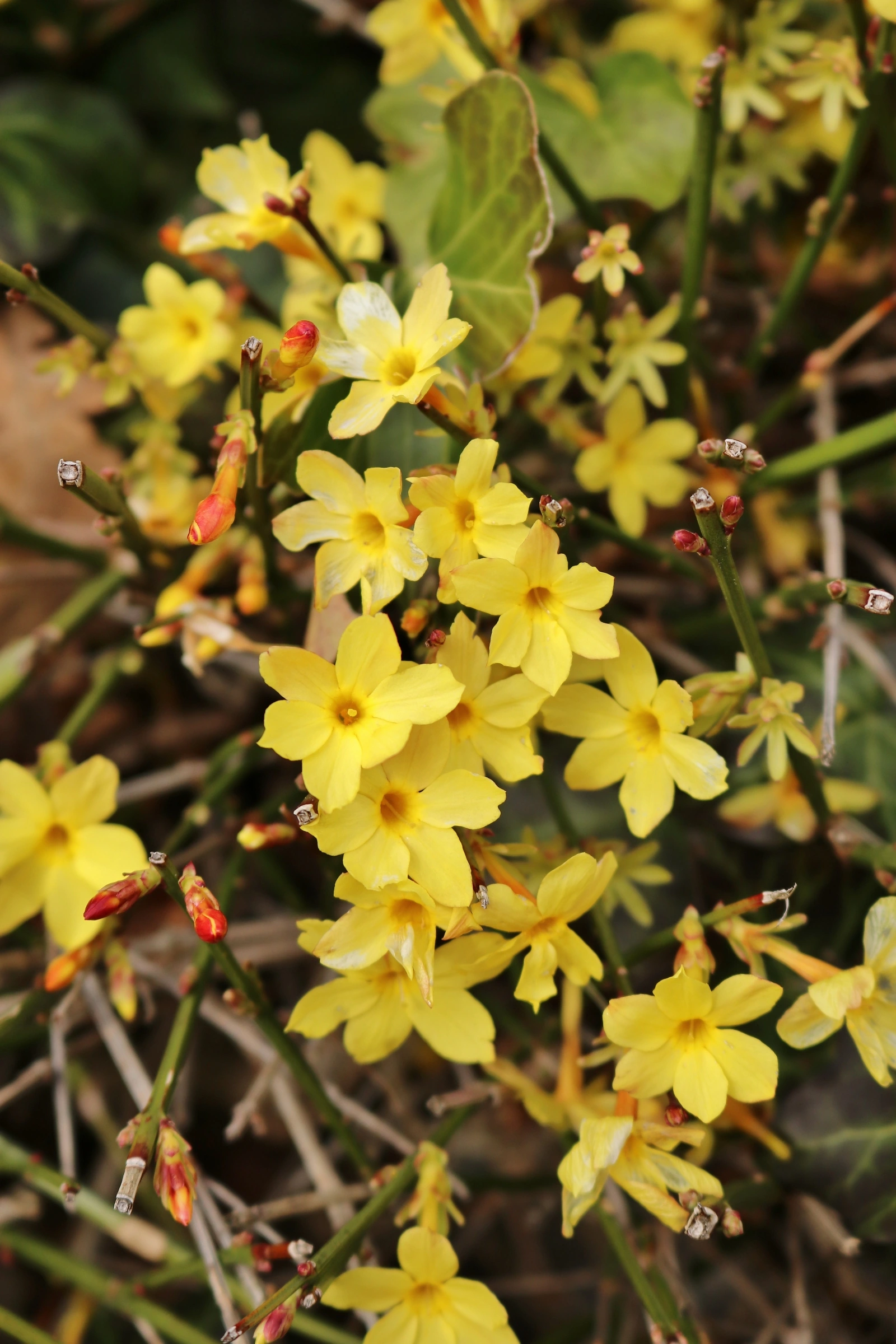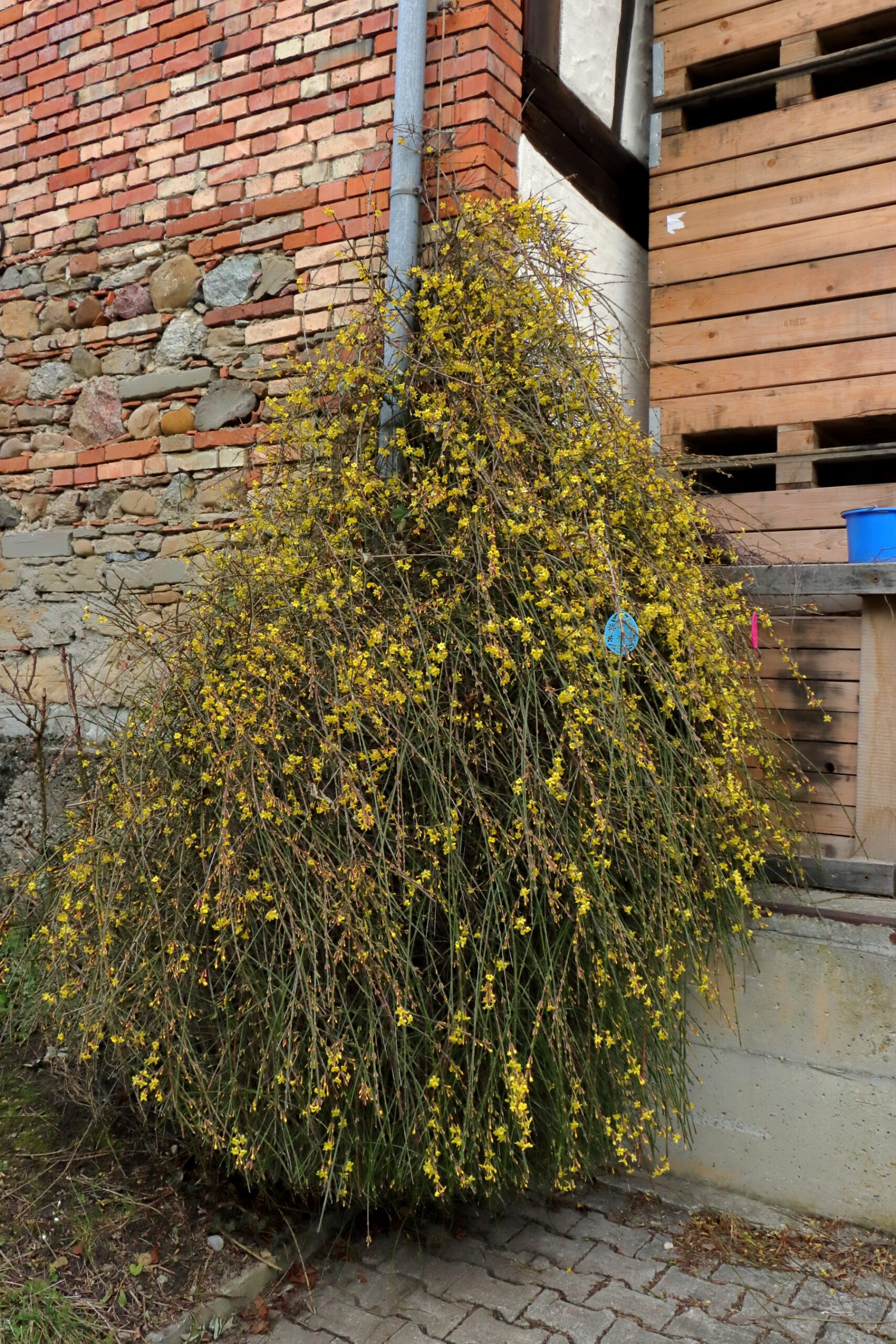Due to its flowering time from December onwards, the “winter jasmine” is a true winter bloomer. It only stops blooming when temperatures remain below freezing.


Occurrence and distribution: The winter jasmine actually originates from southern China (on the island of Hainan) – according to the University of Bochum. It grows on rocky slopes and in ravines. The plant can be found in the mountains at elevations between 800 and 2,500 metres. It was imported to Europe as early as 1844. The first description was published by the English botanist John Lindley in the Journal of the Horticultural Society of London in 1846. Today, the winter jasmine is used as an ornamental plant in gardens and parks.
Plant description
Growth form: It is a climbing plant that can form branches up with a length of up to 5 metres. Only after flowering its leaves develop on the stems. The individual thin branches are dark green and have an edged structure. If the branches break off or are cut off, they turn grey. Due to the plant’s habitat, they often have a hanging growth. Some of the twigs can also attach themselves to the ground.
Leaves: Its leaves are located opposite each other on the stem and are three-parted. Individual leaf parts are ovoid to narrowly elliptical. The twigs of the shrub are perennial while the leaves are shed in autumn. The upper side of the leaves has a shiny surface.
Flowers: The flowers of the winter jasmine are usually produced in the winter months. The flowers have a diameter of approx. 2 cm. Their colour is golden yellow. They have five to six petals. Inside the flower a stigma is formed that protrudes slightly from the petal tube. The stamens are only about half as long or shorter than the stigma. Yellow petals form at the lower end of the flower. The plant is a so called winter-flowering plant. In very mild temperatures, the flowers can bloom before Christmas. Unlike other members of the species, the blossoms do not have a scent. The flowers can freeze in severe frost. The flower buds have a reddish colouring on the outer shell. One or two flowers form on each part of the stem. The flowering period is from December to April.
Seeds: The fruits are egg shaped and have a reddish colour. However, they can only form on flowers with long pistils. Most cultivated plants will not produce fruits.
Plant Reproduction
Plant Reproduction: In our winters it is too cold for the pollination of the plant, because at this time almost no insects will fly. The winter jasmine is therefore considered sterile in our regions. Multiplication is mainly done by cuttings. Also, the occurrences of the plant that have escaped into the wild in northern China do not have any natural pollinators.
Distribution codes: none (synthetic)